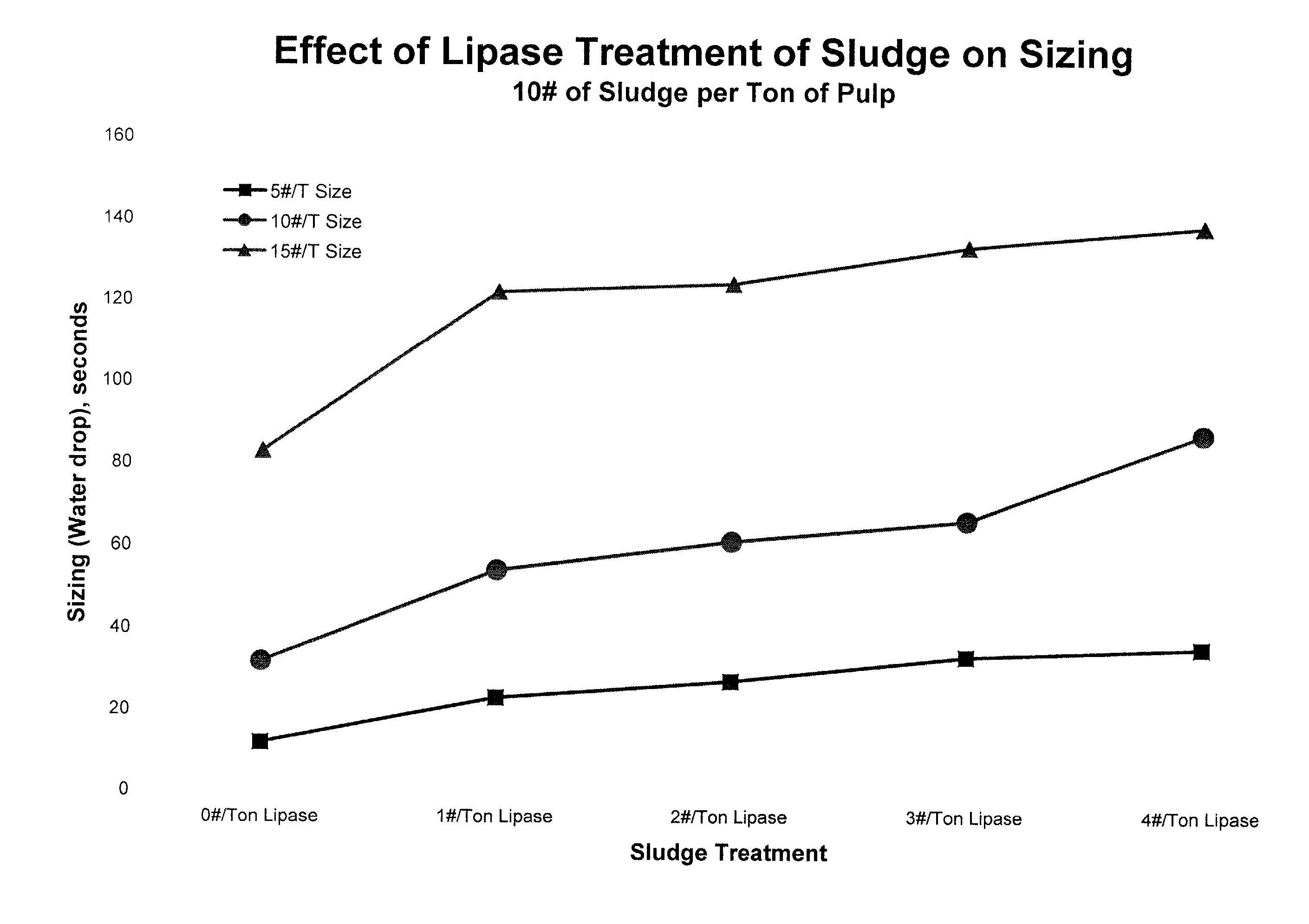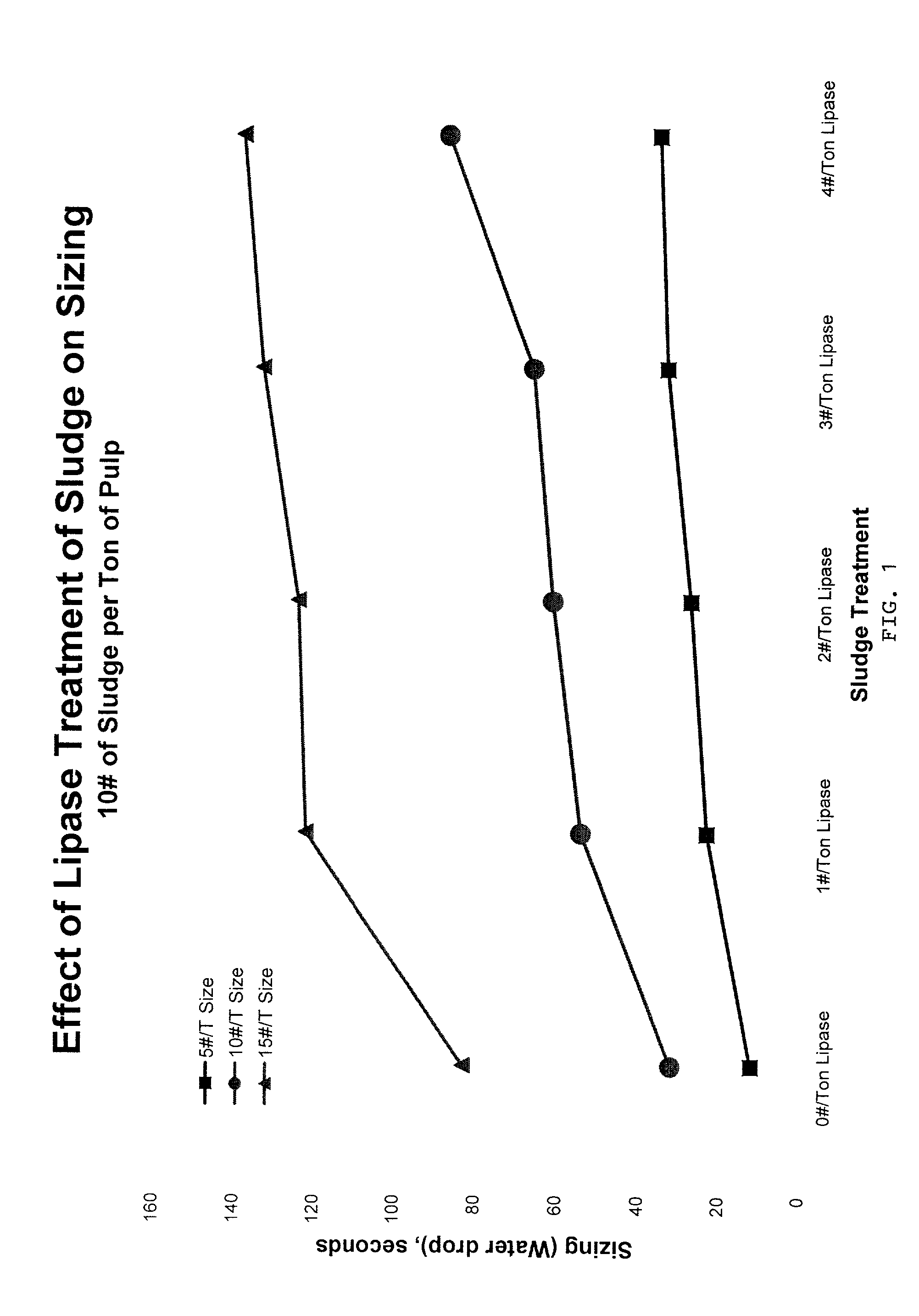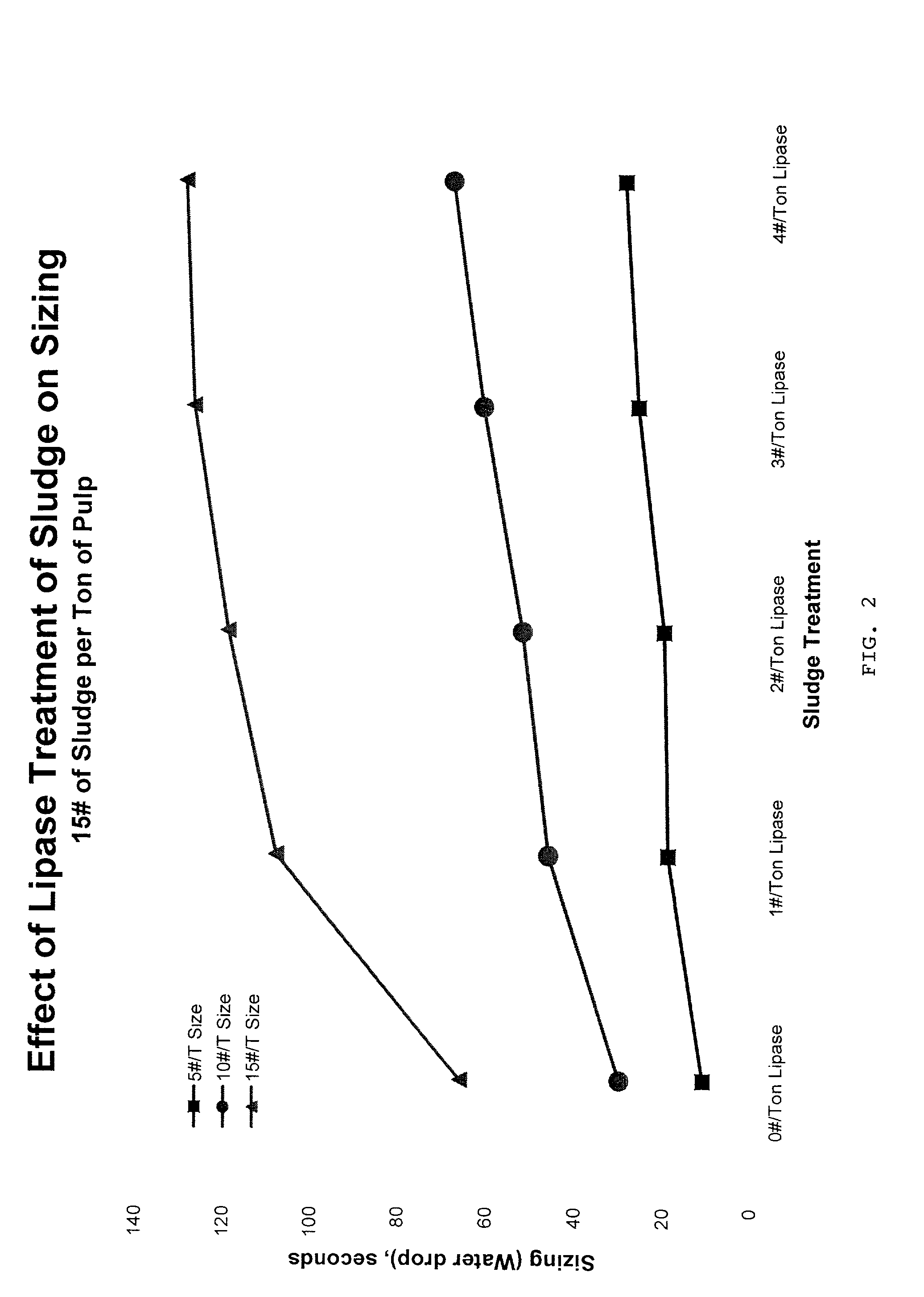Papermaking process using enzyme-treated sludge, and products
a technology of enzyme-treated sludge and papermaking process, which is applied in the field of papermaking processes and products, can solve the problems of affecting sizing, size reversion, and usually incomplete recovery, and achieves the effects of improving sizing, sizing retention, and resistance to size reversion
- Summary
- Abstract
- Description
- Claims
- Application Information
AI Technical Summary
Benefits of technology
Problems solved by technology
Method used
Image
Examples
example 1
[0045]Four sets of handsheets were created. One set was created out of the papermaking stock and contained no recycled or added papermaking sludge. One of the sets of handsheets was created from pulp that contained the papermaking stock and either 50 pounds or 100 pounds, respectively, of the papermaking sludge (untreated), based on the dried solids weight of the stock and the sludge. Another set of handsheets was created from papermaking pulp that contained the paper making stock and either 50 pounds or 100 pounds, respectively, of alum-treated sludge per ton of papermaking stock, based on the dried solids weight of the stock and the sludge. The alum-treated sludge contained 20 pounds of alum solution per ton of sludge, based on the dried solids weight of the sludge and alum solution. The fourth set of handsheets was created from papermaking pulp containing the papermaking stock and either 50 pounds or 100 pounds, respectively, of enzyme-treated sludge, based on the dried solids we...
example 2
[0051]In this example, a freshly-acquired composite sludge sample was treated with dosages of from one pound to four pounds, respectively, of lipase per ton of sludge, based on the dried solids weight of the lipase and the sludge. Treatment of the sludge lasted for 30 minutes, after which time the treated sludge was mixed with a papermaking pulp at a rate of 10 pounds of treated sludge per ton of recycled fiber based on the dried solids weight of the sludge and the fiber. Each combined pulp slurry was sized with between 5 and 15 pounds of ASA sizing per ton of papermaking stock. The ASA sizing material was emulsified with polymers. The resulting pulps were prepared into handsheets and water drop measurements were taken for each sheet. The water drop tests is a standard TAPPI method where a drop of water is dropped onto the sheet and the time for the water to adsorb into the sheet is measured. The time that it takes for the drop of water to adsorb into the sheet is recorded as the re...
PUM
| Property | Measurement | Unit |
|---|---|---|
| contact time | aaaaa | aaaaa |
| contact time | aaaaa | aaaaa |
| contact time | aaaaa | aaaaa |
Abstract
Description
Claims
Application Information
 Login to View More
Login to View More - R&D
- Intellectual Property
- Life Sciences
- Materials
- Tech Scout
- Unparalleled Data Quality
- Higher Quality Content
- 60% Fewer Hallucinations
Browse by: Latest US Patents, China's latest patents, Technical Efficacy Thesaurus, Application Domain, Technology Topic, Popular Technical Reports.
© 2025 PatSnap. All rights reserved.Legal|Privacy policy|Modern Slavery Act Transparency Statement|Sitemap|About US| Contact US: help@patsnap.com



